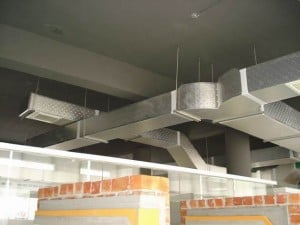Three Part Blog Series: Why Building Humidity is Important
Health Risk & Dangers
Throughout this three part blog series, real world scenarios, health & safety concerns, cost savings, mold prevention, and industry best practices for proper sensor selection relating to building humidity levels will be reviewed and analyzed. Part 2 takes a deeper dive into the health risks and damages of failing to properly measure building humidity. Risks and damages include: an overview of sick building syndrome, mold growth, and how to prevent mold from occurring.
The Importance of Measuring Building Humidity
With numerous risk associated with unmonitored humidity levels in buildings, one of the most critical risks is faced by the people within the building. Respiratory and other health aliments can arise as a direct result from lack of monitoring humidity levels.
Sick Building Syndrome
Buildings that don't have proper HVAC systems or effective sensors to adequately control them, suffer form a condition knows as "sick building syndrome" (SBS) Managing a building environment within a range of 30-60 percent relative humidity (RH) provides worker comfort, productivity, and reduces health risks while protecting products and furnishings. SBS also refers to acute health and comfort issues that building occupants suffer from after spending an extended period of time within a building environment. The symptoms are fairly consistent with consequences of both high and low relative humidity mentioned in part 1 of the blog series- eye,nose, and throat irritation, headaches, a dry cough, itchy skin, dizziness, fatigue, and difficulty concentrating.
Sick building syndrome can be triggered by interacting factors, starting with inadequate ventilation in which the HVAC system doesn't properly distribute air to people in the building. The American Society of Heating, Refrigerating and Air-Conditioning Engineers (ASHRAE) recommends a minimum of 15 cubic feet per minute (CFM) of outdoor air per person, and 20 CFM per person in office spaces. People within the building can begin to feel the effects of SBS when the HVAC system consistently delivers below this level. Lastly, biological contaminants, molds bacteria, pollen, and viruses- may also cause SBS. These can breed in stagnant water that has collected in ducts, humidifiers, drain pans, or on ceiling tiles and insulation.
Mold Growth
Mold digests whatever it is growing on, and causes cosmetic damage like stains on office furniture. Mold can rot wood, damage drywall and eventually lead to structural damage to buildings. Unchecked mold growth may require buildings to be shut down, gutted, and possibly rebuilt. Depending on the size of the building, costs can vary from tens of thousands to millions of dollars. It is extremely difficult to identify the root cause and clean up of mold. All effected elements of the building must be removed to keep it from spreading. Causes for higher than recommended humidity levels and condensation problems must be further examined, which can include water leaks, maintenance issues, as well as HVAC system design and duct layout. The HVAC system shouldn't run if it is suspected to be contaminated with mold.
Preventing Mold
Tips for prevention include:
- Fix leaky plumbing and leaks in the building envelopes as soon as possible.
- Watch for condensation and wet spots. Fix the source(s) of moisture problem(s) as soon as possible.
- Clean and dry wet or damp spots within 48 hours
- Keep HVAC drip pans clean, flowing properly, and unobstructed.
- Vent moisture-generating appliances, such as dryers, to the outside when possible.
- Maintain low indoor humidity below 60 percent RH
- Perform routinely building/HVAC inspections and maintenance.
The best way to prevent mold is to design, fabricate, install, operate, and maintain an HVAC system that is capable of providing a comfortable environment in which relative humidity is within 30-60 percent. Humidity sensors that are high quality, highly accurate, reliable, and durable are critical to an HVAC's effectiveness.
CLICK HERE for The Importance of Measuring Building Humidity Whitepaper Series (Part 2)



